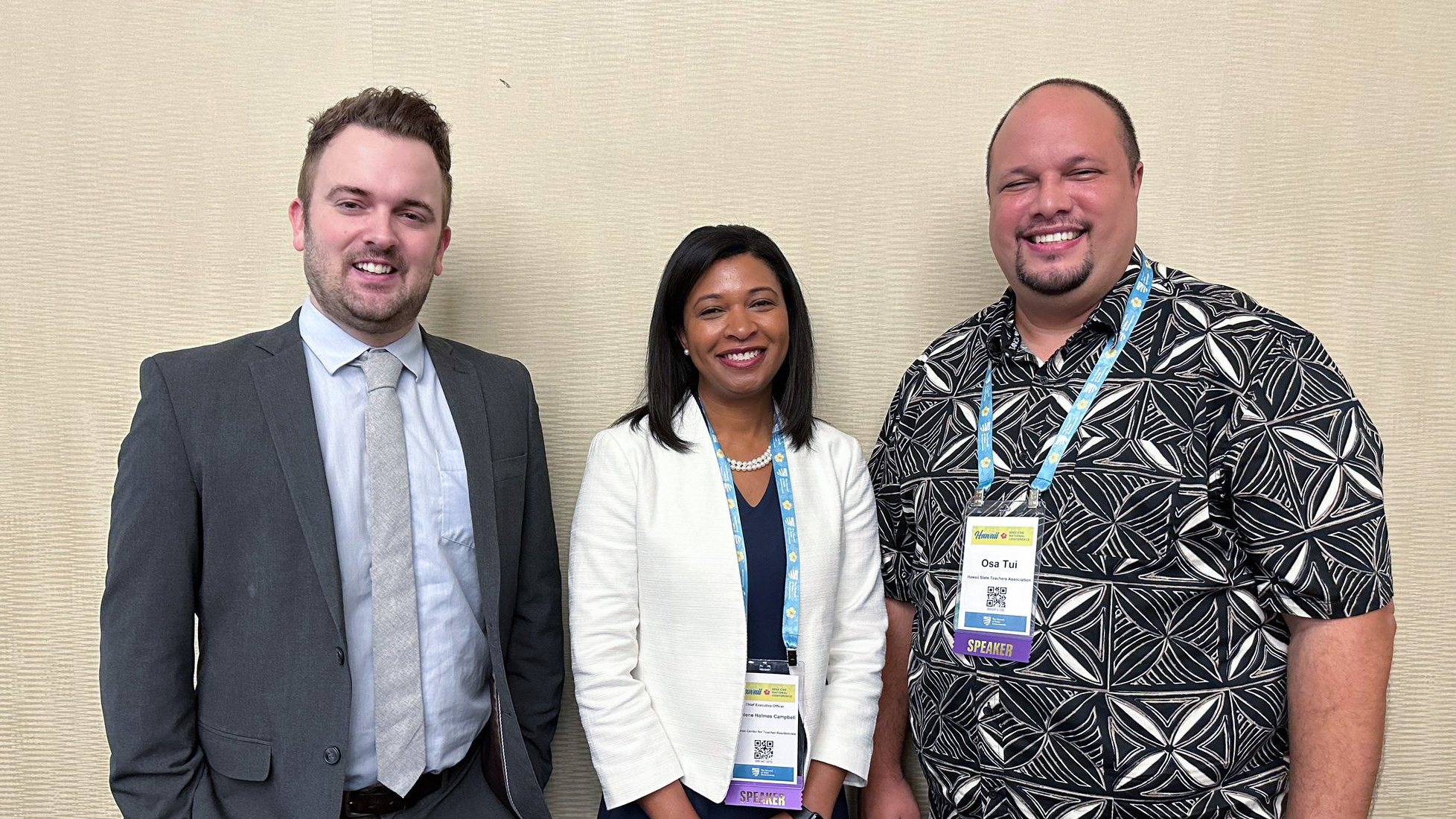The Council of State Governments brings 1,200 state-level government officials to Waikīkī
Posted: December 9, 2022
From shortage differentials to a salary compression adjustment, Hawaiʻi State Teachers Association president Osa Tui, Jr. Thursday touted union-led advancements that helped Hawaiʻi recruit and retain qualified public school teachers. He addressed a crowd of state-level government officials from across the country during the Council of State Governments National Conference, held in person this year at the Hilton Hawaiian Village in Waikīkī.
“People come to Hawaiʻi thinking they’re going to come teach in the morning and go out and surf in the afternoon, and then they realize, hey, I gotta get a second job. I gotta get a third job, because the bills, I can’t pay the bills otherwise,” Tui said. “We have a constant churn in teachers who want to come to Hawaiʻi, so it’s really important that we try to focus on local students who have those support systems in place so that we don’t have this loss every year.”
Despite setbacks from the coronavirus pandemic and the threat of furloughs, Tui described the tireless efforts of HSTA members who worked with the state Board and Department of Education, schools superintendent, lawmakers, and the governor to implement and continue effective shortage differentials for special education, hard-to-staff geographical areas, and Hawaiian language immersion.
He also thanked Hawaiʻi legislators for fixing salary compression for thousands of underpaid teachers whose salary did not match their years of service. This critical pay adjustment led many retirement-ready educators to remain in the classroom.
Tui said more needs to be done to alleviate Hawaiʻi’s recent spike in resignations. “People are leaving the profession and they’re continuing to leave the profession,” he said, “so these are things that we need to address going forward.”
Rep. Amy Perruso, who served as an HSTA leader before running for state office, said Tui’s overview prompted her to reflect on massive hurdles Hawaiʻi educators have overcome. “It was a reminder about how difficult that organizing was, and how committed the teachers were to the vision and how important agency leadership was in that process, so it actually made me super grateful,” she said. “It (also) reminded me that we still have a lot of work to do around both recruitment and retention.”
HSTA President Tui also noted that in subsequent discussion and Q&A, lawmakers brought up many disappointing conditions educators still face in other states.
“One of the things that I’ve learned here is that we’re lucky in many respects. We had someone who was talking about in Utah, when they have to go on maternity leave, not only do they not get any leave for that, they have to pay for their own substitutes,” Tui said. “That is just crazy. So that’s why it’s so valuable to have HSTA fighting for our members, fighting for things like that, and trying to make sure that we can get more and more of the benefits that our members need that’s going to help them in their personal lives and in the classroom.”
Teacher residencies, apprenticeships
Fellow panelists shared their methods of attracting new educators in different states and ensuring their sustained success in the workforce.
Kathlene Holmes Campbell, Ph.D., CEO of the National Center for Teacher Residencies, works with school districts and universities to develop high-quality teacher residency programs that allow aspiring educators to connect coursework and the K–12 classroom.
“More than 50% of teachers leave in the first three years if they’re not in a residency program,” Campbell said. “Here’s what we know: 76% of residents remain in the classroom after three years. It is a significant difference from our traditional pathways, and it’s because they feel more prepared.”
David Donaldson, founder of the National Center for Grow Your Own, said he aims to “create a world where an aspiring educator can become a teacher for free and get paid to do so.”
He administered competitive grants for educator preparation providers with requirements for state partnerships, including no out-of-pocket costs to the candidates, dual-certification in special education or English as a second language, and a minimum of two years of student teaching for a bachelor’s degree.
“We ended up seeing candidates with more diverse backgrounds now attending higher-performing ed prep providers,” he said.
Donaldson also successfully lobbied for the U.S. Department of Labor to make K–12 teaching eligible for registered apprenticeship. “All the money that was used to retrain people like my brother-in-law (who worked in automotive production when the industry crashed in 2008) to become plumbers, electricians work in the culinary arts, for the first time in history, can now be used to train people to become teachers,” he said.
Perruso said these discussions inspire her to consider potential actions for Hawaiʻi’s upcoming legislative session. The Wahiawā lawmaker will chair the House Higher Education and Technology Committee when the Legislature convenes in January 2023.
“I’m in a position where I can help facilitate those partnerships and help actually work on our teacher workforce,” Perruso said, “so I think that it is really important for teachers to stay engaged in the legislative process of the political process, because that’s how we kind of move the needle.”
HSTA encourages all members, the community and our decision-makers to connect with lawmakers to ensure our public schools receive proper funding and resources to foster positive learning experiences for our students.
The Council of State Governments National Conference brings together roughly 1,200 state-level officials from across the country in all three branches of government. The four-day event features sessions that explore issues in education, emergency management, economic development, cybersecurity, health care, and more.

Photo from left: David Donaldson, National Center for Grow Your Own; Kathlene Holmes Campbell, Ph.D., National Center for Teacher Residencies; Osa Tui, Jr., Hawaiʻi State Teachers Association
